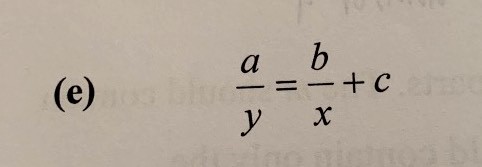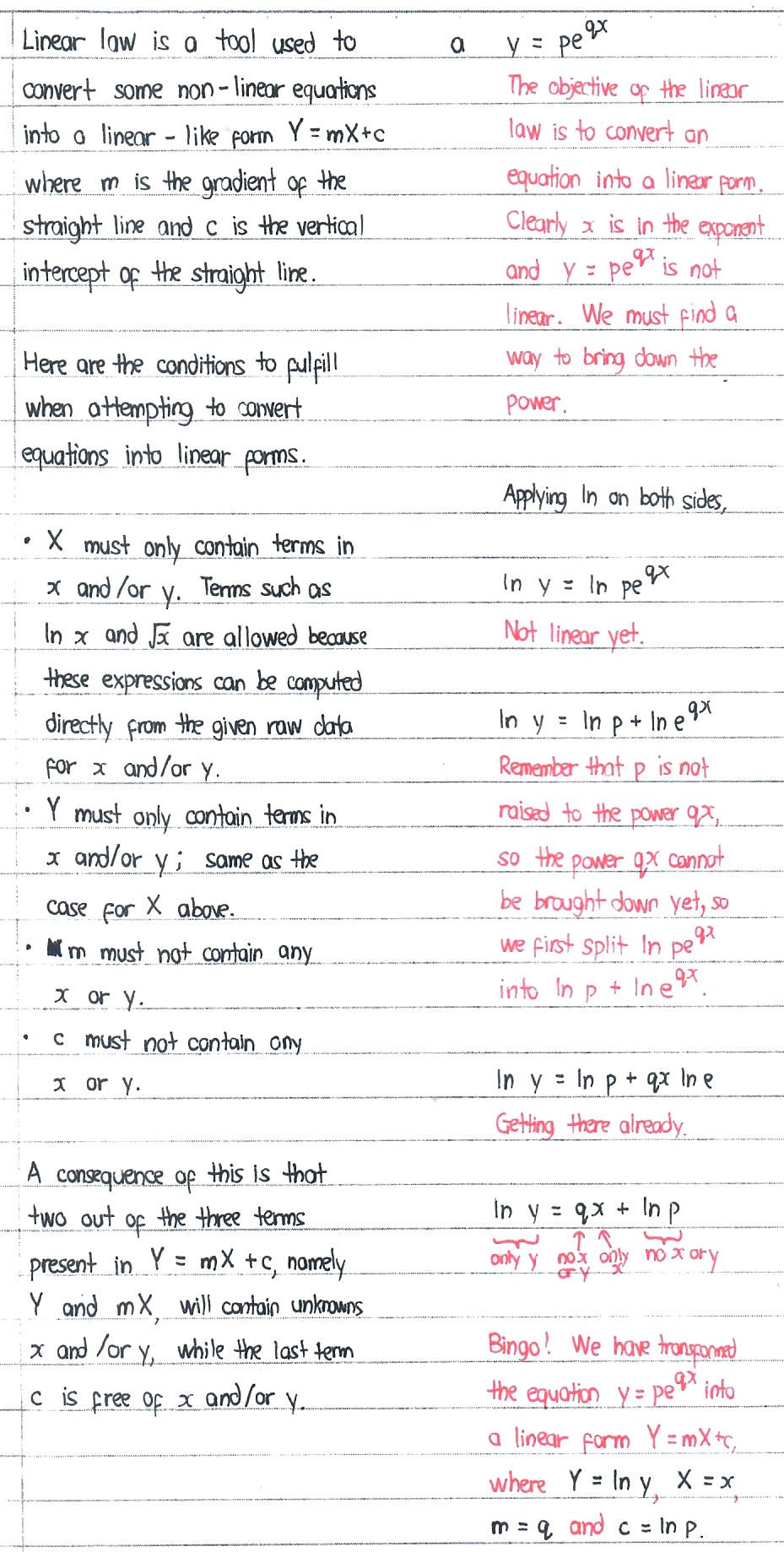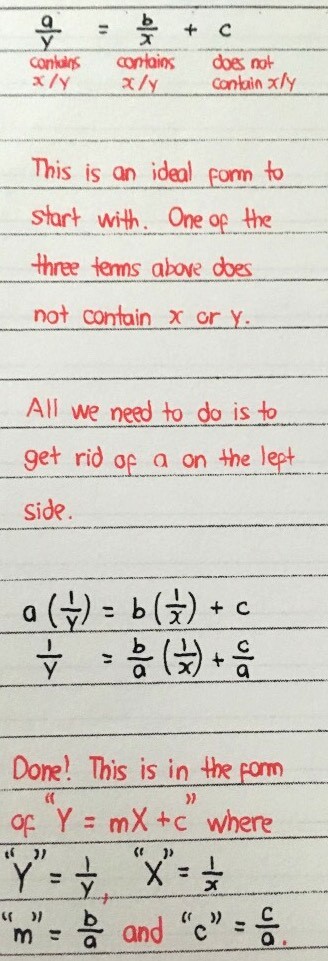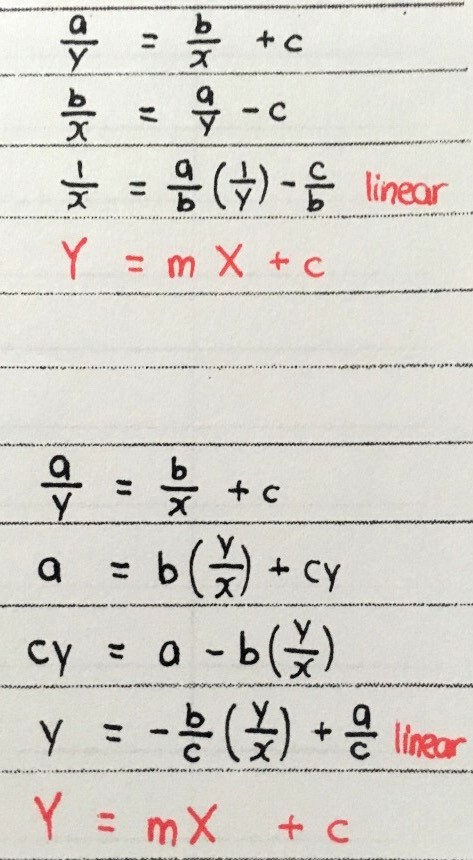Ask Singapore Homework?
Upload a photo of a Singapore homework and someone will email you the solution for free.

Question
secondary 3 | A Maths
3 Answers Below
Anyone can contribute an answer, even non-tutors.

I just started Linear Law today and I’m a little stuck, would mean a lot if someone helped (:
Y = 1/y
X = 1/x
gradient m = b/a
y-intercept = c/a
Y can be in any form involving only the variable of y. Meaning Y cannot contain x.
Likewise, X can be in any form involving only the variable of x and cannot contain y.
m and c cannot contain y or x variable as they must be constants. m and c can be in any form. However, m must be a factor of X, and c must be a term by itself.
I will write up the explanations later.
See 3 Answers
There are a few more forms, but I will not do them here. You can play around with the terms and obtain the remaining ones.
Do not be surprised if Y contains only x and X contains only y. In linear law, this is perfectly acceptable.








